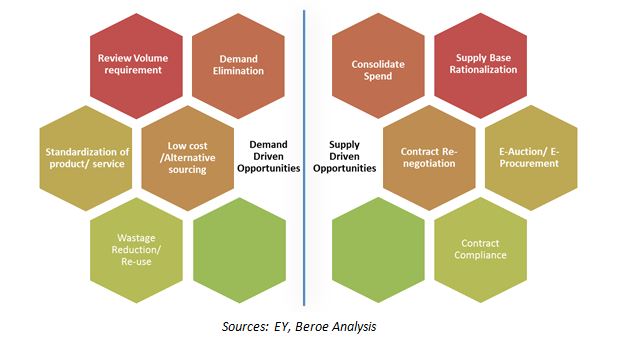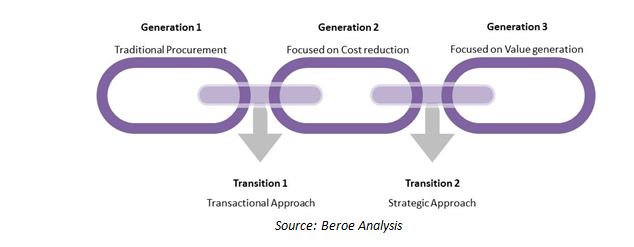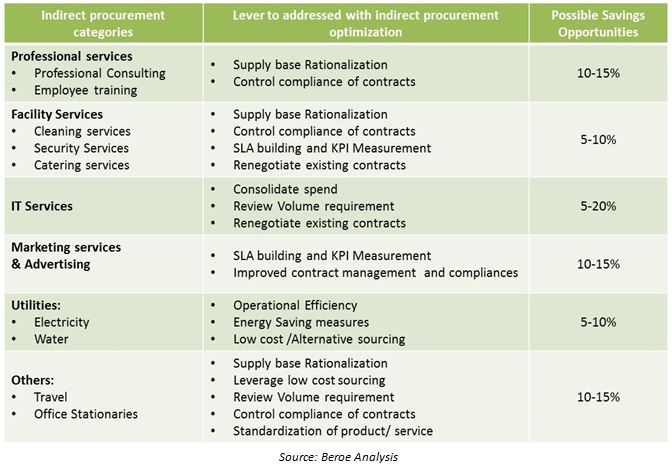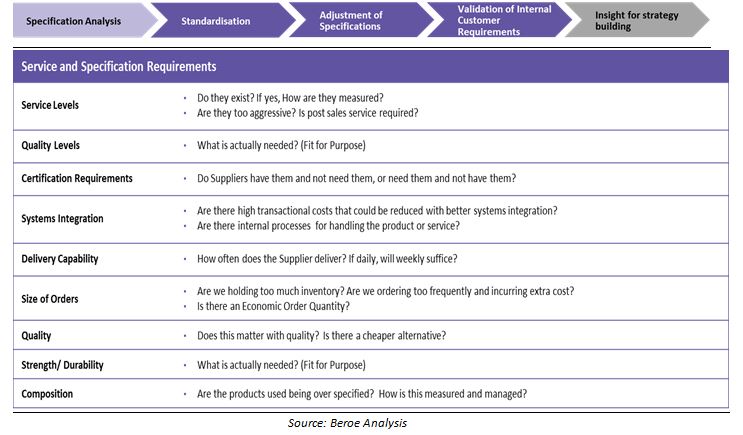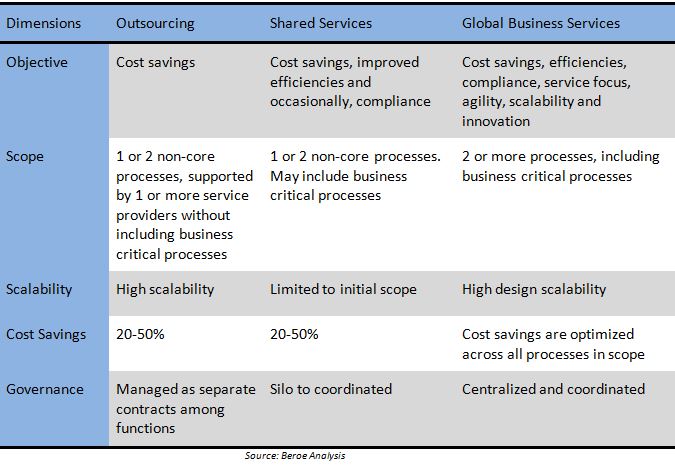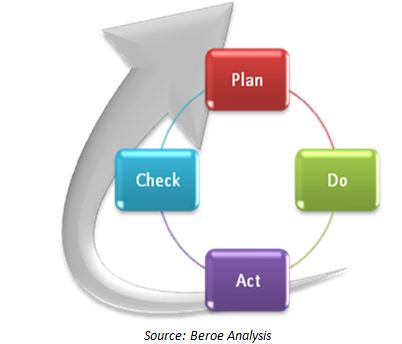
Focusing beyond cost savings helps manage indirect spend categories efficiently

Abstract
When it comes to procurement activities, most procurement organizations focus more on goods and services directly related to their business and less on indirect operations such as IT, facilities, maintenance, HR, and marketing. However, depending on the type of business, these indirect expenses account for around 45 percent of a company's overall spend.
While most of the organizations are still considering cost reduction over process improvement or value addition, the question remains on its relevance for the business in the long run. Although optimizing one’s indirect procurement could result in considerable savings, understanding the right approach to execute this is more essential.
Introduction
Indirect spend category generally consists of all the materials and services that are required to operate any business. This includes areas such as sales and marketing, utilities, maintenance, professional services, facilities and office supplies.
Many studies indicate that initially category optimization of indirect spend can result in significant cost reduction and savings varying between 20 and 40 percent based on the spend categories. However, the actual problem starts after few years when the tangibility of saving dries up. Cost reduction opportunities start to decrease as most of the larger spend categories have already been reviewed and negotiated multiple times.
Direct vs. Indirect spend category
Unlike direct expenditures, indirect spend owing to the nature of service or product requires a more varied and extended supplier base. It becomes an inherent challenge for the category managers to develop, maintain and manage a larger number of suppliers. Measuring and tracking performance of such large scale suppliers, deciding right set of KPIs, and drawing inferences become extremely complicated.
In direct sourcing, it takes years to bring in new innovations, technology advancement, process improvement, etc. Companies have to invest in these innovations to maintain the competitiveness in the market. Because of these investments, costs tend to increase. So there is always a time gap between cost reduction activities, at least few years. Due to this investment and cost reduction cycle, direct sourcing divisions can continuously generate savings and help improving their product or service added values. Whereas, all such activities are less significant in indirect sourcing, management does not pay much heed to invest or interested to pay higher for services which are less significant to the bottom line.
Challenges in indirect sourcing
Many companies may have optimized every cent spent with direct suppliers, implemented various operational principles such as Lean Six Sigma in its manufacturing operations to the limits, and tightened the supply and delivery timelines down to the hour. Indirect spend presents even more complex challenges in opportunity for increased efficiency and cost control.
The following are the telling features of indirect sourcing, that make them all the more difficult and complex to manage:
- Low average spends – The product volume is generally on the lower side due to the wide assortment of product and service categories and its suppliers. In such cases, procurement may not be able to dictate terms in negotiations with suppliers.
- Frequent low volume purchases – The sheer volume and frequency of purchases, albeit of small individual values, render indirect sourcing very difficult and resource intensive to handle.
- Uncontrolled/ Un-negotiated spend – While companies understand the value of managing direct spends, they may not realize the value of managing their indirect spend. The fact remains that cost savings for indirect procurement are not linked to a specific bill of materials as with direct procurement. Most of the times, the impact of cost savings in indirect procurement is underestimated by management.
- Purchases that are not covered by a procurement-negotiated contract are counted as maverick spend. This could be a one simple time purchase of office supplies or travel expenditures or spend on critical ad-hoc technical trouble-shooting services.
- Are driven by more internal stakeholders – Since procurement has less of a say in matters concerning indirect spending as it affects all internal stakeholders, it becomes difficult for the procurement function to control it.
- Difficult to evaluate –It is difficult to measure quality of indirect goods and services as there is no definitive parameter to measure. In some cases, delivery of indirect goods and services is not registered within a company’s enterprise system. Metrics typically applied to direct suppliers are not comparable when it comes to indirect suppliers.
- Require diverse experience – Purchases can range from paper clips to electricity supply. Such a broad spread of purchase categories requires the procurement team to gain expertise in a wider range of products and services to make procurement effective.
New age indirect spending: Key strategies to curb indirect spending
Measuring return on investment on most of the indirect spend categories is often difficult and ambiguous. Hence, the impact of indirect spend categories on the bottom line of any organization is uncertain.
For direct spend categories, the impact of investment does visibly influence business directly unlike the direct spend categories. Therefore, management most of the time misjudges the potential of managed indirect spend categories.
Procurement becomes highly complicated when big organizations deal with diverse range of materials and services under indirect category. In a structured way, significant saving opportunities can be identified for both demand and supply driven organizations. Indirect spend do not always have a category-based sourcing strategy and this leads to irregular sourcing.
Due to the inclusion of low-value and low-risk products and services, the potential cost savings are overlooked by management.
While managing indirect spend is more challenging, the potential impact on the business makes it worth the effort. The impact might be indirect, but it can significantly bring changes in business delivery.
There are some initial steps an organization can take to control their spend:
Managed spend, use of automation and measurement – The volume of transactions and diversity of suppliers make indirect spend an ideal area to manage through collaboration tools.
Using the data that a company has on indirect spend, prioritize areas of the largest spend to develop expertise in those areas. Management has to redefine the mission of indirect sourcing. It should include not only cost reduction but also value creation by bringing new technologies into the company. Involvement of top management is crucial in such decision making.
There are many solutions to connect (web, EDI, SFTP), integrate with different software and systems, allow closed loop procure-to-pay in order to minimize manual processes, and provide proper tracker for each spend.
Choose preferred suppliers – Onus should be to minimize maverick spend by negotiating contracts with key suppliers in each of the top expenditure areas. By pooling the smaller spends into a fund with fewer suppliers, increased leverage on pricing can be gained.
Set generic KPIs – Supplier capability measurement and evaluation for indirect suppliers are challenging owing to the variety of supplies of goods and services and types of vendors, etc. However, few general KPIs would be used across a variety of vendors which include contract compliance, customer satisfaction, cost competitiveness, and continuous improvement.
Studies and experts from the industry suggest the following cost saving opportunities from indirect procurement areas which constitute a large chunk of most of the organizations:
Transformational way out
The following lists contain the basic information that procurement might look to gather from the business in order to define requirements and specifications to identify sourcing opportunities. Evaluate if the current service and specification requirements are well defined. Properly understanding the current service and specification requirements can help to create value from the internal supply chain.
Following are few more considerations for better opportunity realization:
Leaner and sustainable sourcing framework building: Analyzing the value chain completely and identifying the opportunities for adopting sustainable sourcing is crucial; it would help organizations in finding economical solutions. There are various sustainability models followed, however, leaner and simpler models are considered effective in sustainable procurement phase. Understanding the market helps organizations to realize the potential and allows them to reap benefits in the present and in the long term. This basically will ensure that direction is set right.
It is also important to devise a sustainability-based solution for service delivery and to meet buyer requirements. Additionally, it would help to identify right suppliers and perform audits to ensure adherence to standards. These audits are generally costlier and most often organizations end up without finding right suppliers. Fourth step would be to enter into sourcing contracts with selected suppliers. Final stage is where the continuous monitoring and process improvement is done.
Choosing the right strategic partner: Due to strategic importance of the category and competitive pressure in the market, suppliers are clubbed into different groups. Ideally, supplier management should be done based on the value and importance of the category in picture. The major enablers for strategic relation with suppliers are high business growth, supply chain resiliency and value chain optimization.
It is important for a company to realize the stage of procurement maturity they belong to. One should be aware of the fact that they should not implement strategic supplier relationship management (SRM) at a wrong stage. It is also equally important to understand the driver for implementing strategic SRM. It can be either a matter of choice or compulsion due to external competitive pressure to identify the strategic supplier.
Strategic supplier is a subset of the key supplier base that companies collaborate at a very earlier point of the value chain. Followed by this, as a critical step companies should align internal procurement objectives and KPIs with that of the strategic partner. These include measuring and benchmarking procurement performance process, building robust contract management and supplier performance systems. This sets up a stronger foundation for a sustainable relationship. A continuous plan involving a consistent process, proactive initiation for innovation and coordinated process at various levels of the procurement organization will ensure the success of the strategic SRM relationship.
Shifting towards shared service: Shared services provided platform for consolidation and standardization of business data which in turn was immensely capable of driving quality and success, cost reduction and savings remained important and flowing in.
The concept of shared services took form from the ever grooming need for cost reduction and standardization based on the transactional activities in large organizations. The idea is to support operations to a trajectory of excellence which is seamless, scalable and sustainable. Compliance and controlled governance are all dependent on the process re-engineering and design capability expertise.
Steps to exploit indirect procurement to reap possible cost saving benefits
A structured approach is required to acquire savings out of indirect spending. It would require identifying areas with significant saving opportunities and chalking out an action plan that would accrue savings in the long run as well. Managers need to adopt very fundamental approach with PDAC (Plan, Do, Act, Check) concept.
For successful implementation of any strategy, planning phase should be given utmost importance. A major hindrance raised by indirect sourcing is the variety of areas in which spend occurs. Recognizing the category, amount and suppliers for each spend is a must for identification of saving opportunities before taking up any action plan. It is essential to accentuate possible opportunities for savings which generally tend to be demand-driven. Then each opportunity should be prioritized on the grounds of the financial benefits that are possible and on the ease of implementing the steps warranted for each opportunity.
An action plan involving both the procurement function and the budget owners of every department should be implemented to acquaint everyone across the organization with the goals and responsibilities for the indirect procurement cost saving initiative. The plan should rally to influence every department to change their manner of utilizing the budget to take advantage of saving opportunities in each area of spending. Control measures such as budget reduction to reflect savings, and invoking penalties for unauthorized spending would be helpful in making sure that the initiative is adhered to.
Moreover, a system should be implemented to review savings in the revised procurement plan periodically. It calls for a continuous effort that can recommend departments about improvement areas and possible amendments in the revised procurement process.
Conclusion
Indirect procurement strategies should be based on facts and data analysis to drive decisions. Many organizations use scenario and contingency planning as part of the strategy to ensure that they have good sourcing plans in place. The sourcing function possesses the ability to capture essence of new trends, new technologies and innovations to help management make an informed decision. Therefore, the focus in indirect sourcing should shift from mere cost reduction to value creation for internal stakeholders and organizations of all scales.
Related Insights:
View All
Get more stories like this
Subscirbe for more news,updates and insights from Beroe
